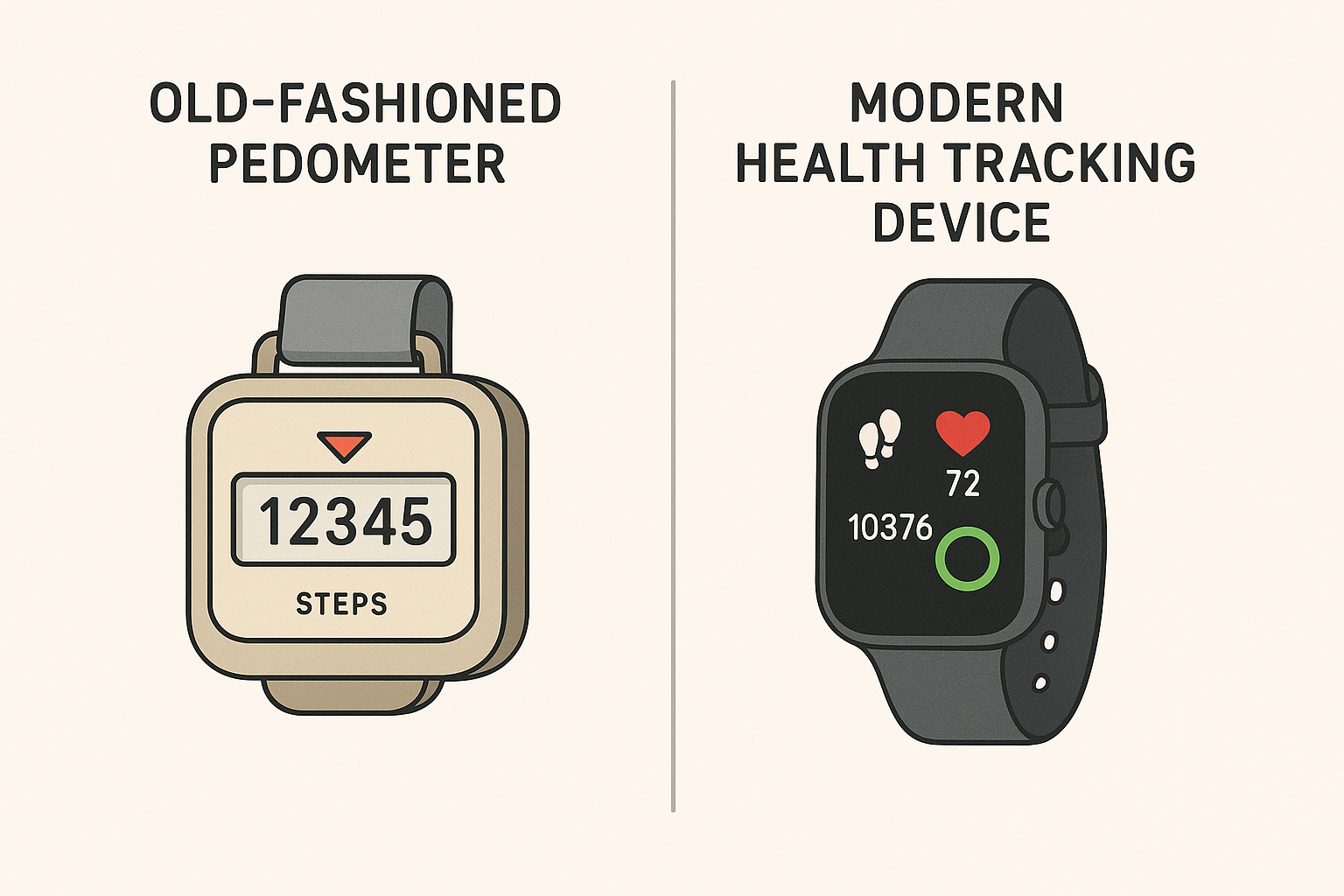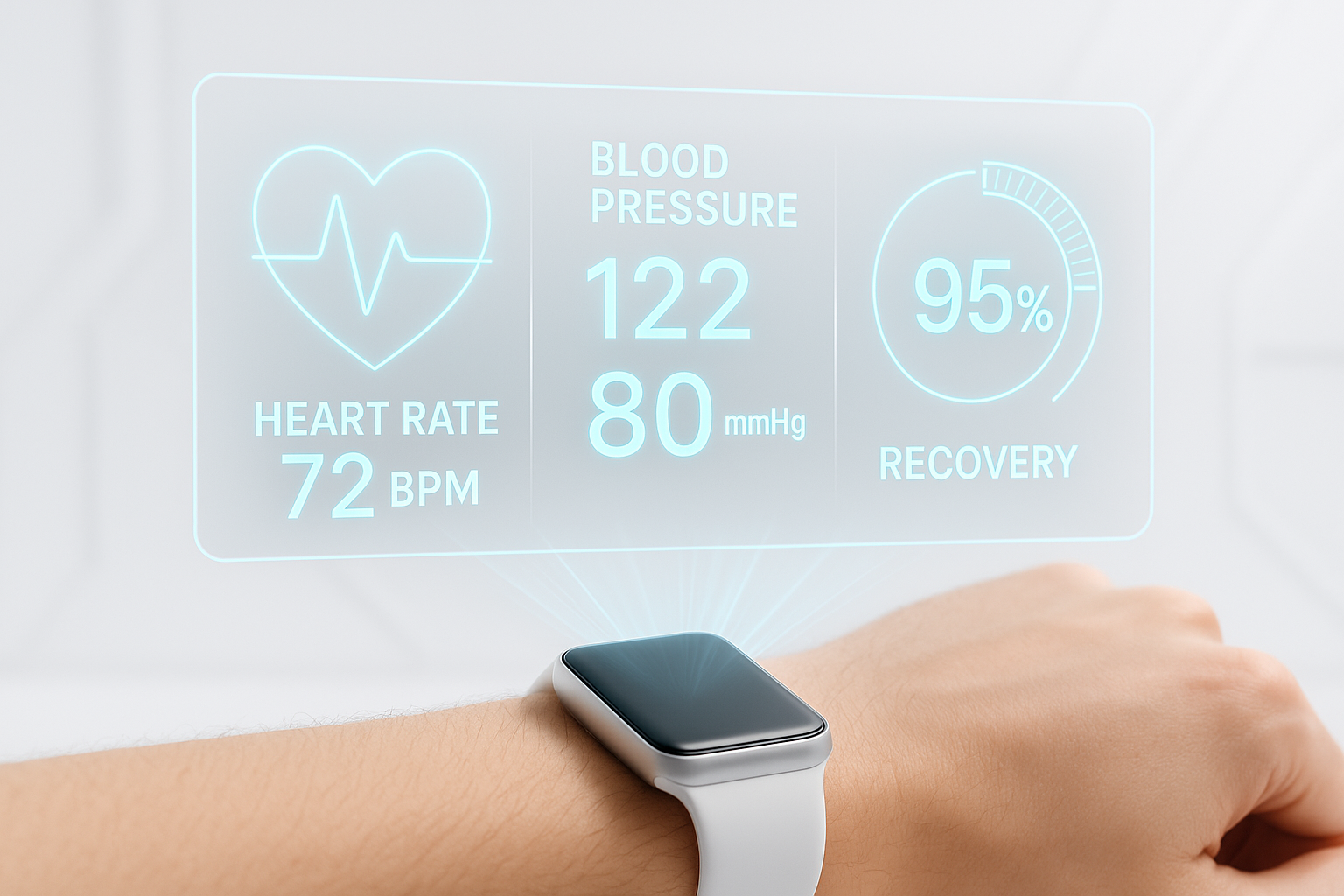Health wearables have transformed from simple step counters and watches into powerful tools that track heart rate, sleep, stress, and recovery. These devices give us deeper insights into our well-being and help us make better lifestyle choices every day.

The Early Days: Watches and Step Counters
The earliest “wearables” were little more than wristwatches and pedometers. Mechanical watches provided accurate timekeeping, while step counters—first popularized in Japan in the 1960s—introduced the idea of personal health tracking, albeit in a basic way. These devices were functional, but their scope was narrow: telling time or counting steps.
The Fitness Revolution: Activity Trackers
In the 2000s, brands like Fitbit and Jawbone ushered in a new wave of wearables focused on fitness. These lightweight bands could monitor steps, calories burned, and, later, heart rate. By linking to smartphone apps, users suddenly had access to a visual history of their physical activity. This development tapped into the rising fitness movement, making data-driven self-improvement more accessible than ever before.
The Smartwatch Era: Beyond Fitness
The launch of the Apple Watch in 2015 marked a turning point. Smartwatches combined traditional features like notifications with health tracking capabilities. No longer were wearables just step counters; they evolved into multi-functional health devices. The inclusion of optical heart rate monitors, ECG apps, and blood oxygen sensors highlighted a pivot toward preventive health.
Today, smartwatches from Apple, Samsung, Garmin, and others act as mini health dashboards, helping users make daily decisions about sleep, exercise, and recovery. Devices like the Pulse device reflect this shift, focusing heavily on health monitoring and recovery insights.
Advanced Health Monitoring: More Than Numbers
The biggest breakthrough in modern wearables is their ability to provide actionable insights. Heart rate variability (HRV) analysis, for example, gives clues about stress and recovery. Continuous glucose monitoring (CGM) systems now integrate with smart devices, helping people with diabetes manage blood sugar levels in real time.
Sleep tracking has also grown in sophistication, moving beyond simple “hours slept” to detailed reports on REM, deep, and light sleep phases. This allows individuals to understand how lifestyle choices—like caffeine intake or late-night screen time—impact restorative rest.
Benefits of Health-Focused Wearables
- Early Detection of Issues
Wearables can flag irregular heart rhythms, oxygen desaturation, or prolonged stress levels before they escalate into medical emergencies. - Informed Lifestyle Choices
With real-time feedback, users can adjust exercise intensity, track recovery, and improve sleep hygiene. - Improved Accountability
Data tracking keeps people motivated, encouraging consistency in exercise, hydration, and rest. - Doctor Collaboration
Many wearables now allow data sharing with healthcare providers, creating a more accurate picture of a patient’s health history. - Peace of Mind
For many, having a wearable is like carrying a personal health assistant—always monitoring, always alert.
Where We Are Today: A Health Companion on the Wrist
Modern wearables are less about telling time and more about telling the story of your health. They combine fitness metrics with medical-grade monitoring, offering insights once available only in clinical settings.
This is where devices such as the Pulse health tracker stand out. Instead of just counting steps, they emphasize heart rate variability, recovery, and readiness—helping users avoid burnout and optimize performance in everyday life.
With each generation, wearables become smaller, more accurate, and more integrated into daily routines. Instead of passively collecting data, they actively guide users with recommendations tailored to their unique physiology.
The Future of Health Wearables
The next wave of wearables promises even more integration:
- Continuous blood pressure monitoring without bulky cuffs.
- Non-invasive glucose tracking for millions managing diabetes.
- AI-driven predictive analytics that spot health issues before symptoms appear.
- Seamless integration with telemedicine, providing doctors with 24/7 patient data.
As sensors become more advanced and algorithms more intelligent, wearables may soon move from “nice to have” gadgets to essential health companions.
Final Thoughts
The evolution of wearables highlights a profound shift in how we approach health. What started as simple timepieces and step counters has grown into a powerful ecosystem of personal health monitoring.
By tracking heart rate, HRV, sleep, and other vital signs, today’s wearables empower individuals to take control of their health like never before. They not only support fitness goals but also provide peace of mind, early warnings, and deeper insight into overall well-being.
If you’re ready to explore what the next generation of health wearables looks like, the Pulse device is a strong example of how technology is redefining personal wellness.

